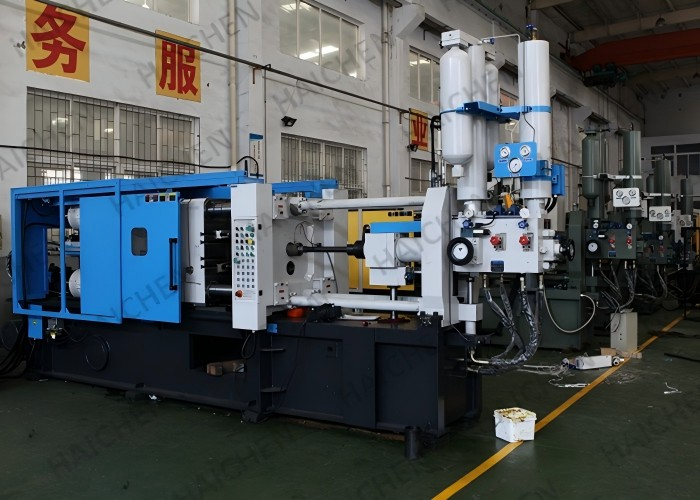Die casting machine HMI is a critical component that facilitates interaction between the operator and the machine.
It provides a user-friendly platform to monitor and control the machine’s operations.
It typically includes both hardware and software components. The hardware component may include input devices such as touchscreens, buttons, switches, etc., while the software component is responsible for displaying real-time data, providing a graphical interface, and executing control commands.

Key components of die casting machine HMI
Display Panel:
- Typically a touchscreen or graphic LCD display.
- Displays real-time data, machine status, and error messages.
Control buttons:
- May include physical buttons for emergency stop, reset, and mode selection.
- Virtual buttons on the touchscreen for detailed operation.
Indicators and alarms:
- Visual indicators (e.g., LED signals) for operational status.
- Audible alarms for alerts like high pressure, overheating, or faults.
Communication ports:
- Interfaces like Ethernet, USB, or fieldbus systems (e.g., Modbus) for data exchange.
Sensors and inputs:
- Devices to monitor parameters like pressure, temperature, and cycle times.
Power control:
- Integrated controls for energy management and operation of the machine’s power systems.

Functions of Human Machine Interface
Monitoring:
- Displays key parameters such as:
Injection pressure
Clamping force
Temperature of the die and molten metal
Cycle time
- Graphical trends for historical data.
Control:
- Start, stop, and adjust production cycles.
- Control the speed, pressure, and temperature settings.
Diagnostics and troubleshooting:
- Shows fault codes and detailed error messages.
- Step-by-step troubleshooting guides for operators.
Recipe management:
- Stores process parameters for different products.
- Enables quick switching between configurations.
Safety and alarms:
- Safety interlocks prevent machine operation in unsafe conditions.
- Alarms for malfunctions or maintenance requirements.
Energy monitoring:
- Tracks power consumption for efficiency analysis.

Advanced features of die casting machine HMI
User authentication:
- Role-based access control to ensure only authorized personnel can adjust critical parameters.
Remote access:
- IoT-enabled HMIs allow remote monitoring and control via mobile devices or PCs.
Data logging:
- Records operational data for quality assurance and traceability.
Integration with MES/SCADA:
- Synchronizes with Manufacturing Execution Systems (MES) or Supervisory Control and Data Acquisition (SCADA) for higher-level management.
Predictive maintenance:
- Uses machine learning algorithms to predict potential failures based on sensor data.
Haichen die casting machine HMI

Haichen die casting machine human machine interface is designed to provide an intuitive and efficient way for operators to monitor, control, and optimize the machine’s performance.
Haichen die casting machines are known for their advanced automation and integration features, and the HMI plays a central role in ensuring smooth operation.
By ensuring an efficient and ergonomic interface, an HMI enhances productivity, safety, and reliability in die casting operations.



